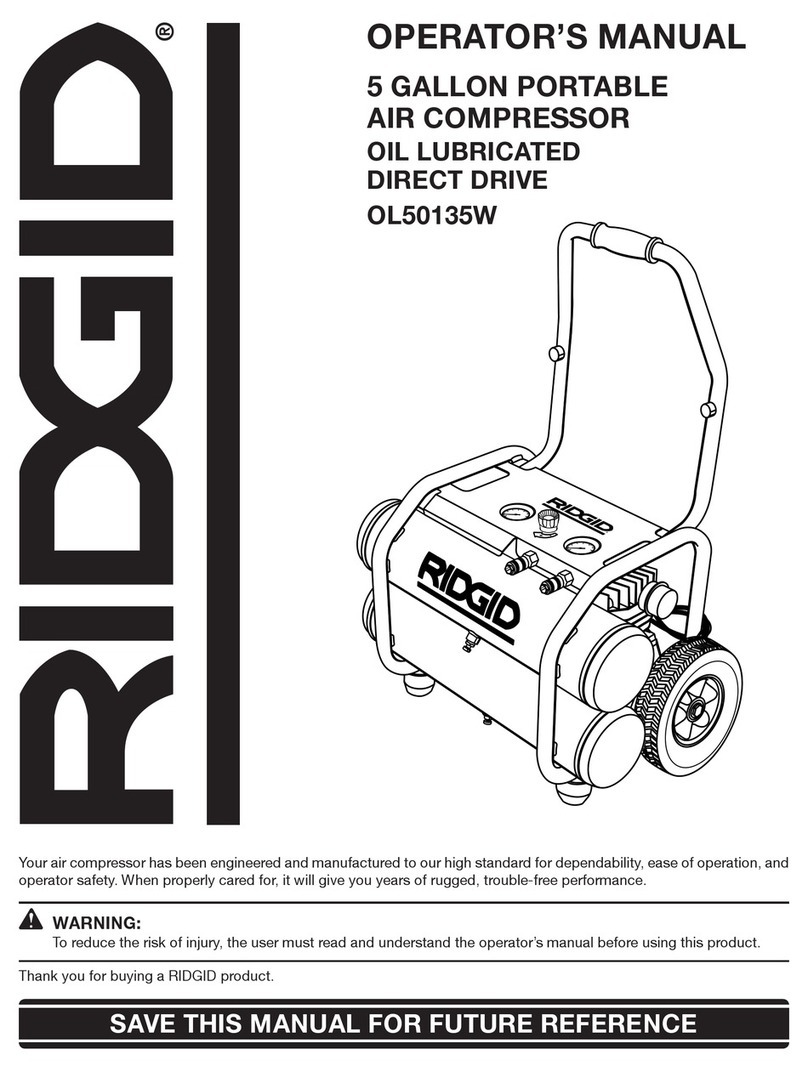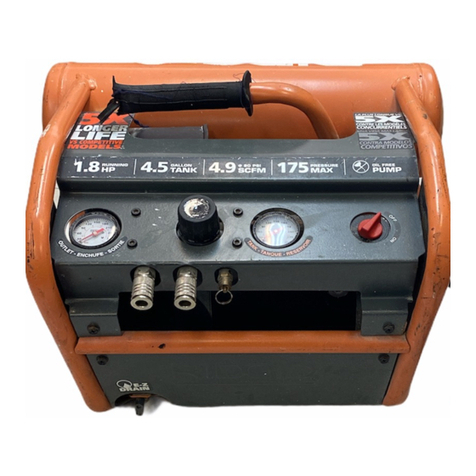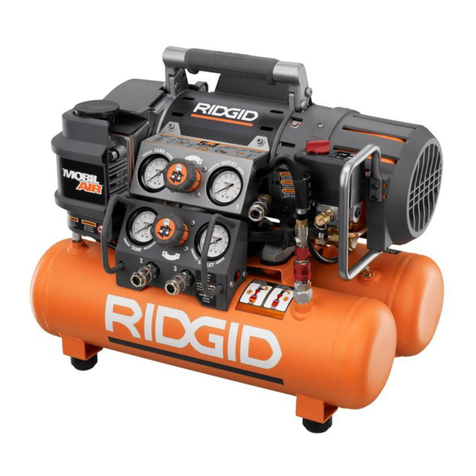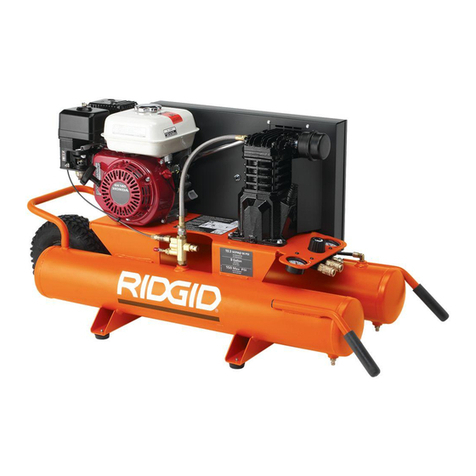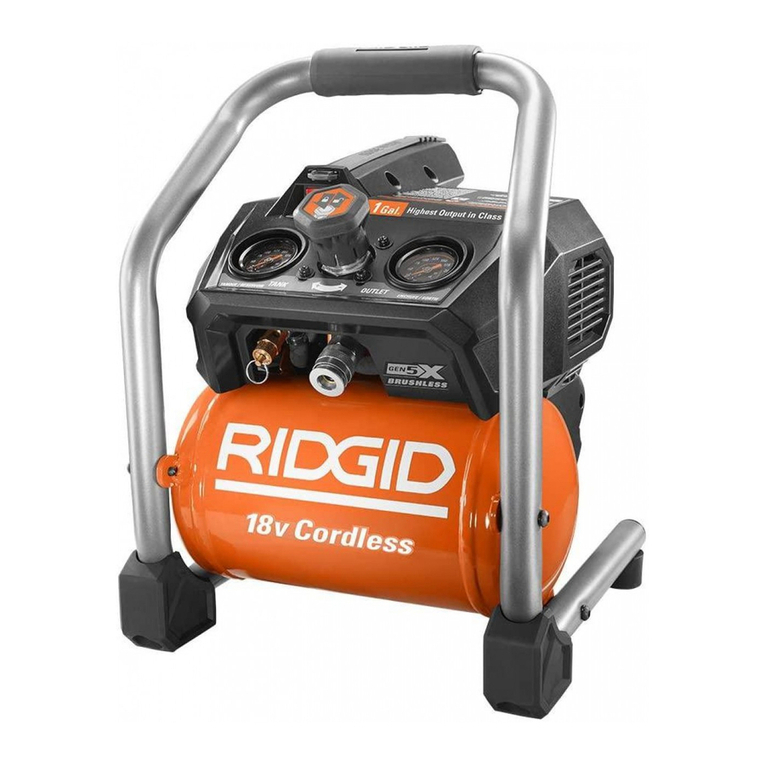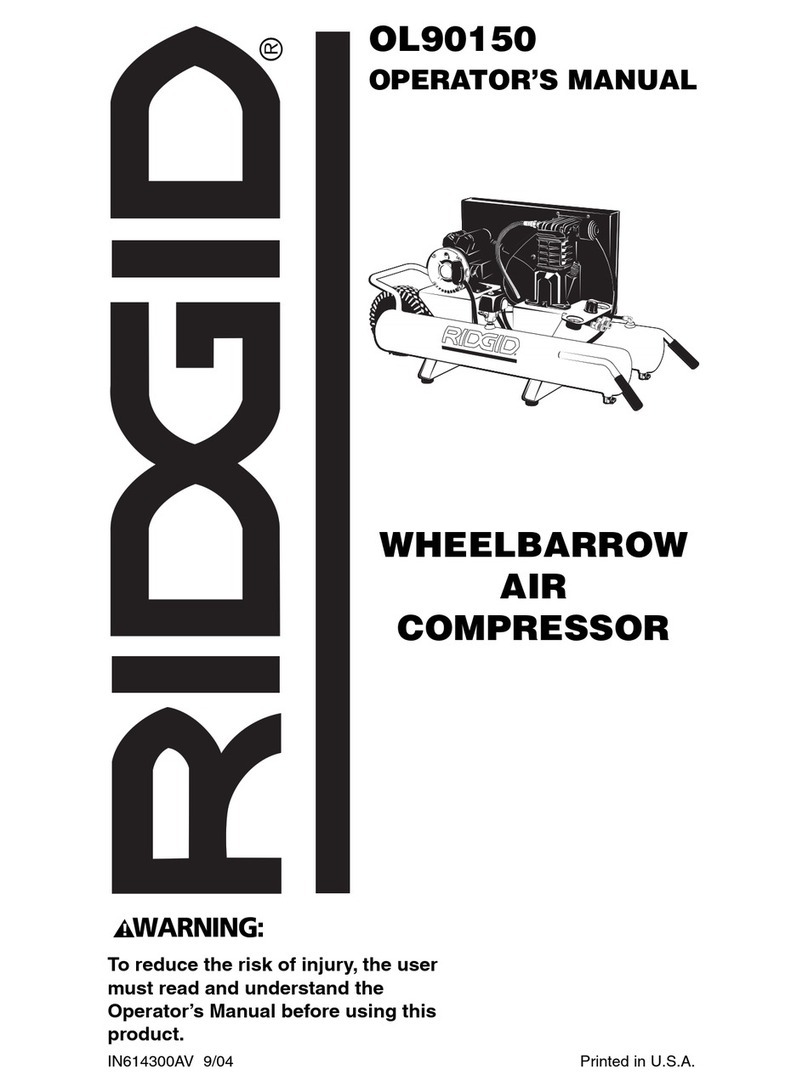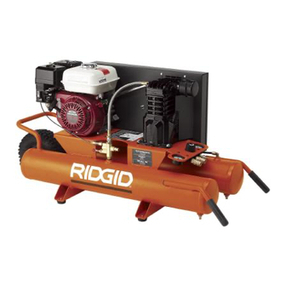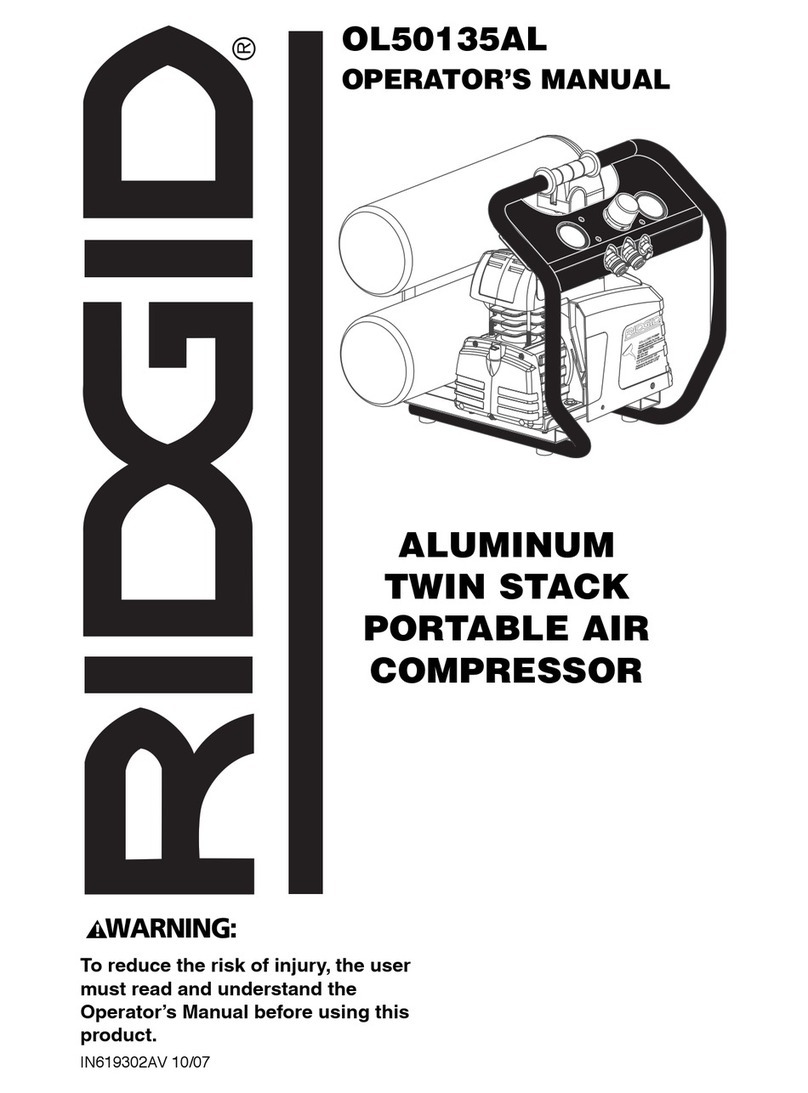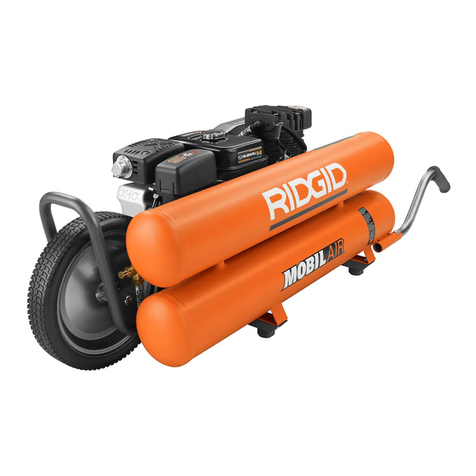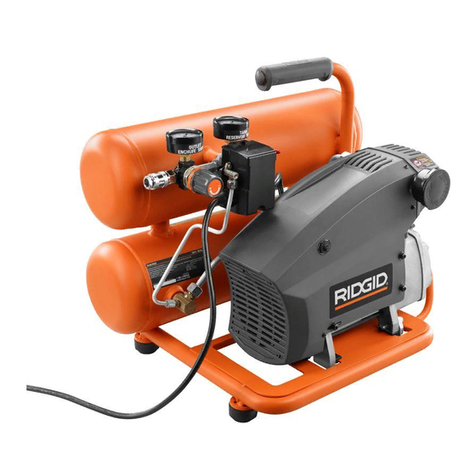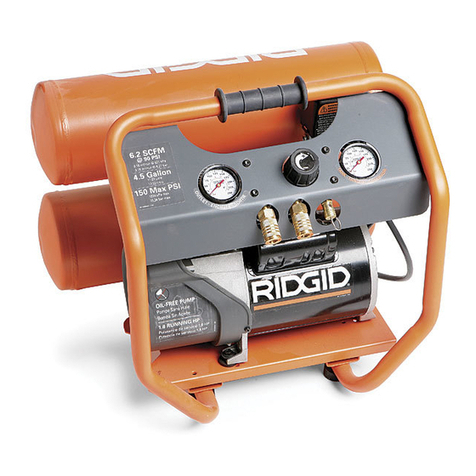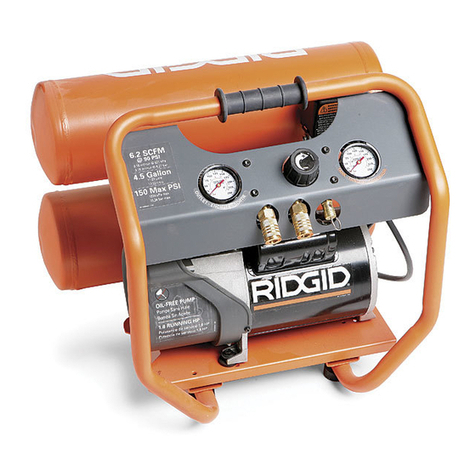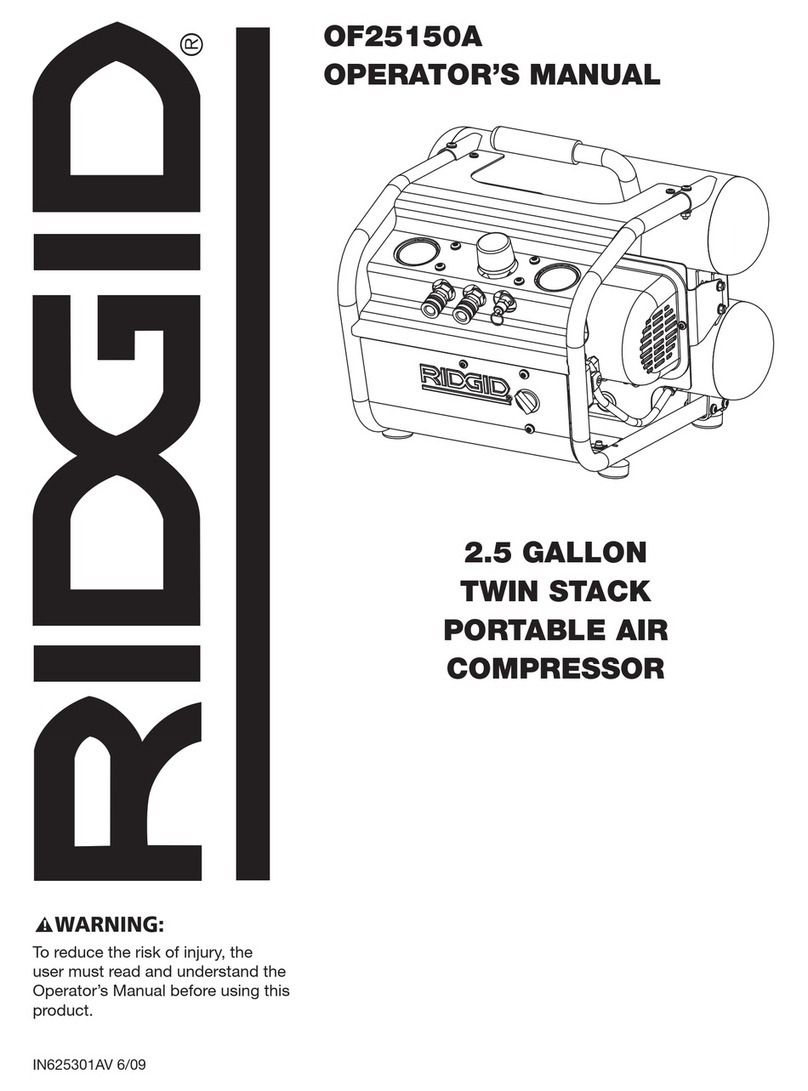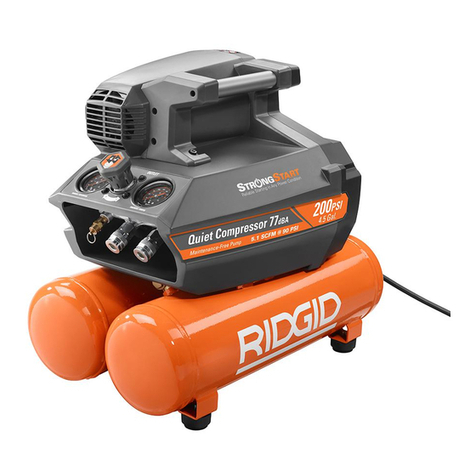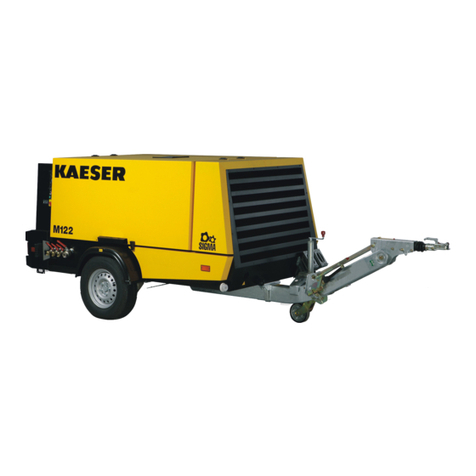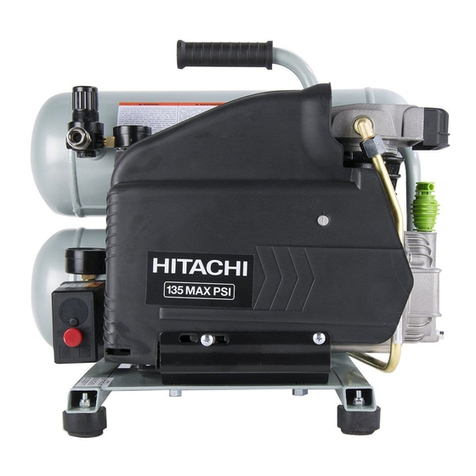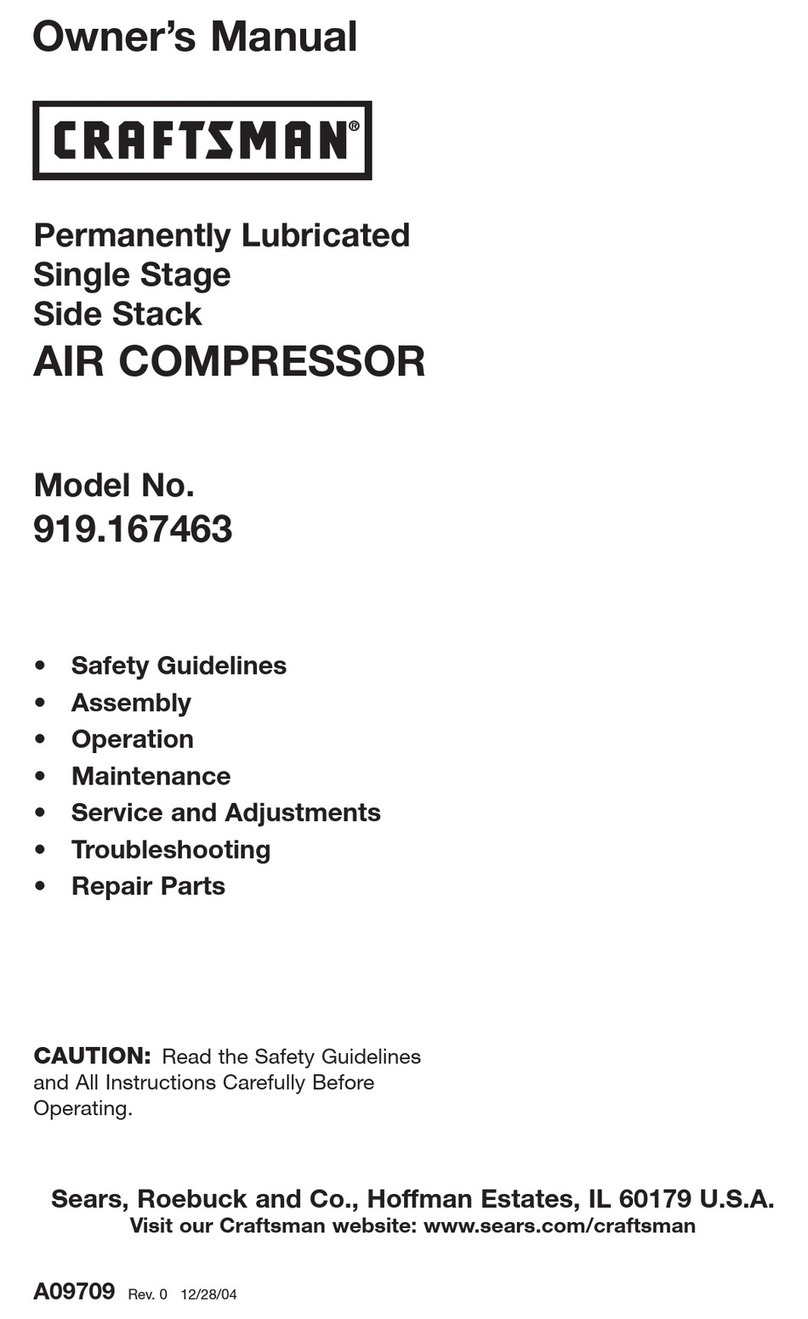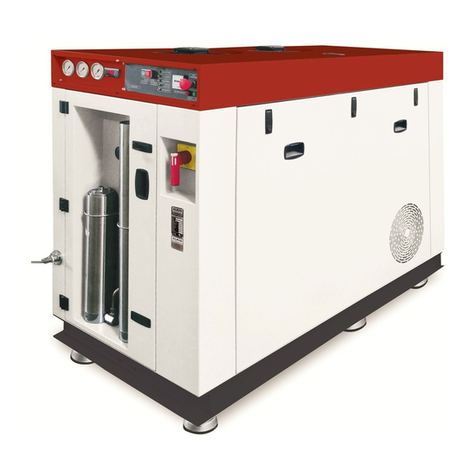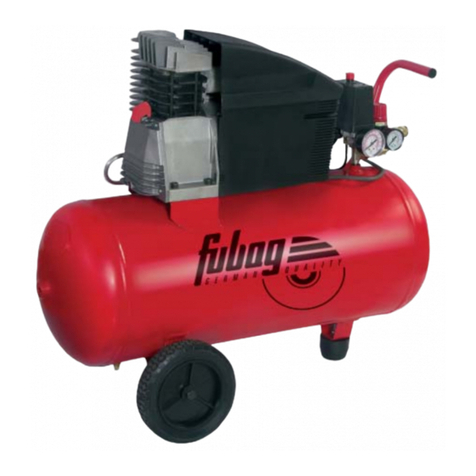Pièces de rechange
No de Numéro
clé de pièce Description Qte
1 WL373000AJ Montage 1
pompe/moteur
2 WL012000AV Filtre 1
3 WL012300AV Cartouche filtrante 1
4 ST158000AV Embase de bouton 4
5 WL003202AV Douille en caouct 2
chouc (Arrière)
6 WL003203AV Douille en caouct 2
chouc [avant]
7 CV222203AJ Clapet 1
8 WL016200AP Tuyau d’echap- 1
pement
9 ST039700AV Écrou 1
10 ST039800AV Virole 1
11 ST117802AV Tube flexible 1
1/4 po
12 ST209800AV Vis de décharge 1
de tension
13 CW209600AV Décharge de 1
tension
14 EC012600AV Cordon 1
15 GA016900AV Jauge du 1
réservoir
16 ST071626AV Vis de 1/4 po - 4
20 x 1/2 po
17 WL024501AV Régulateur 1
18 V-215106AV Soupape de 1
sûreté 1034,3 kPa
19 ST185600AV Prise 1
20 WL025900AV Arceau de 1
sécurité
21 WL025800AV Fixation de pan- 1
neau de contrôle
22 ST073276AV Vis de pied 4
23 ST158300AV Pare chocs en 4
caoutchouc mouté
Fr 21
Pour les pièces de rechange, appeler le 1-800-4-RIDGID
S’il vous plaît fournir l’information suivante:
-Numéro du modèle
-Numéro de série (si applicable)
-Description de la pièce et son numéro sur la liste de pièces
No de Numéro
clé de pièce Description Qte
24 WL021400AV Tuyau de nylon 1
de 3/8 po
25 ST074415AV Vis autotaraudeuse 4
de 1/4 po - 20 x
1/2 po
26 ST119704AV Raccord de 1
pression à 900 de
3/8 po
27 HF203300AV Raccord 2
28 GA016901AV Jauge de sortie 1
29 CW210000AV Déchargeur 1
30 ST022500AV Bouchon 1
31 ST119305AV Raccord de pres- 1
sion de 3/8 po
32 HF002401AV Raccord 1
33 CW211700AV Couvercle de 1
manostat
34 CW211300AJ Manostat 1
35 D-1403 Robinet de vidange 1
du réservoir
36 ST073612AV Bouchon 1
37 AR052700CG Double réservoir 1
15,14 L
38 ST129301AV Vis de couvercle 1
de protection
39 ST129302AV Vis de couvercle 2
de protection
40 WL012406AV Couvercle 1
41 ST072224AV Raccord 1
d’échappement
TROUSSES DE PIÈCES DE RÉPARATION
WL209308AJ Nécessaire de 1
tube d’échappe-
ment (sans
soupape à clapet)
8. Follow all local electrical and safety
codes, as well as the National
Electrical Code (NEC) and the
Occupational Safety and Health Act
(OSHA).
9. Wiring and fuses should follow electri-
cal codes, current capacity, and be
properly grounded.
10. Electric motors must be securely and
adequately grounded. See grounding
instructions and extension cord infor-
mation in this manual.
11. Always disconnect power source
before working on or near a motor, or
its connected load. If power discon-
nect point is out-of-sight, lock it in the
open position and tag to prevent
unexpected application of power.
12. Guard all moving parts; keep visitors
away. Never allow children in work
area.
13. Use only a properly grounded outlet
that will accept a three pronged plug,
and wear shoes to prevent shock
hazards.
14. Be careful when touching exterior of
operating motor; it may be hot
enough to cause injury.
15. Protect power cable from coming in
contact with sharp objects.
16. Clean electrical or electronic equip-
ment with an approved cleaning
agent, such as dry, nonflammable
cleaning solvent.
17. To avoid spontaneous combustion,
discard waste rags into approved
metal waste cans.
18. Never store flammable liquids or
gases in vicinity of compressor.
19. When spraying with solvent of toxic
chemicals, follow instructions provid-
ed by the chemical manufacturer.
20. Spray in a well ventilated area, to
keep fumes from collecting and caus-
ing health and fire hazards.
21. Do not spray in vicinity of open
flames or other places where a spark
can cause ignition. Do not smoke
when spraying paint, insecticides, or
other flammable substances.
22. Use a respirator when spraying.
23. NEVER reset safety valve or pres-
sure switch. Keep safety valve free
from paint and other accumulations.
This provides safety against over
pressure.
24. Do regular maintenance; keep all
nuts, bolts, and screws tight, to be
sure equipment is in safe working
condition .
25. Keep cleaning rags and other flam-
mable waste materials in a tightly
closed metal container and dispose of
later in the proper fashion.
26. Drain tanks of moisture after each
day’s use. If unit will not be used for a
while, it is best to leave drain cock
open until such time as it is to be
used. This will allow moisture to com-
pletely drain out and help prevent
corrosion of inside of tank.
27. Inspect tank yearly for rust, pin holes
or any other imperfections that could
cause it to become unsafe. NEVER
weld or drill holes in air tank.
Safety Instructions (continued)
4
